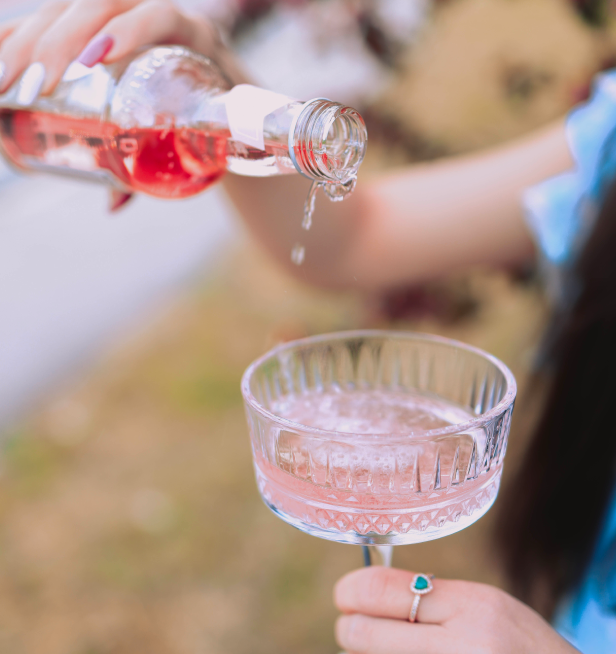
The Rosé story
Get the Scoop on Style
There's a common theme when you ask people about Rosé., you get 'it's way too sweet for me' or 'I would prefer a drier red wine'. These common misconceptions can be changed with a little bit of knowledge around the different style of Rosé that you seek. It's without a doubt that every Rosé will have differing tastes due to the winemaking techniques, grape and region.
These range from the savoury, forest floor type end of the spectrum through to the fruit, strawberries and cream type number. Added to that the sweetness and acidity levels have a huge impact on overall flavour profile and balance. Ultimately it's down to the winemaker as to the style but there are some pretty good indicators that can be found on the label of a Rosé wine that will help you determine if you've found the one for you. A general rule of thumb is taking a look at the variety it is made from will give you a good idea of sweetness levels given that some grapes ripen, and therefore contain more fruit sugars, more readily than others.

There is not a doubt that Rosé is a beloved favourite for many wine lovers. For some, Rosé is seen as an easy go-to as it highlights alllll the goodness that a red wine has to offer without the heaviness and headache it can sometimes bring the next day. The great thing about Rosé is it can be made out of any red grape there's a vast array of styles and flavour profiles to be discovered. So lets get to know the varietals:
For those who like a little bit of sweetness in their Rosés, try looking out for wines made from these varieties:
Zinfandel
White Merlot
Moscato
And for those with a drier palate look for a pretty pink wine made from the following:
Syrah
Grenache
Pinot Noir
Sangiovese
Tempranillo

Popular regions
France VS New Zealand
France is hands down the epicenter of Rosé in the world. It is known to produce a delicate and drier style of Rosé, particularly in the famous Provence region. This style has found favour the world over with consumers and many other countries are now taking their lead from France and replicating this style. The grapes used to produce these wines are a combination of any of the following - Syrah, Grenache, Mourvedre and Cinsault. Being in the South of France where it's considered pretty warm all year round, these dry, fresh Rosés not only make for delicious summer drinking, but pair beautifully with the local cuisine which features a lot of seafood. The downside is that these wines typically demand a higher price than the new world counterparts, but can often be a wonderfully restrained and elegant style that is well worth splurging on every now and then.
In New Zealand, winemakers have been dabbling in making pink wines for some time, but it hasn't been until the last decade that the wider consumer tastes have demanded it at a commercial scale. The result has been a huge surge in demand, particularly for the coveted Provençal style. Many of the larger producers like Villa Maria & The Ned originally started making their Rosé wines from Pinot Noir. However, Pinot Noir can demand a higher price as a red wine and is a notoriously fickle grape to grow so most of the Rose you would buy from the supermarket from New Zealand producers come from a blend of grapes, often with Pinot Gris (Pinot Noirs less temperamental cousin) being used to create a similar flavour profile.
The Colour
Pretty in Pink
The colour of any wine comes from the skin of the grapes (along with tannin, texture and elements of acidity) when it is pressed. The longer the juice is left in contact with the skin the more colour that will leach into the juice. So again, it is ultimately up to the winemaker as to what colour the resulting wine ends up. You will notice almost all New Zealand Rosé producers have followed the Provençal trend of bottling in a flint (clear) bottle. This means the colour of the wine essentially becomes a part of the packaging and can have a great deal of influence over the consumer perception of a wine. For that reason, many winemakers try as hard as possible to replicate the same colour year on year in order to create a sense of consistency.
The Taste
Like any wine, the humble Rosé comes in a wide variety of colours, styles and prices - our advice as always is to find something YOU. Don't worry about what the experts say, know what you like and find something to match.

